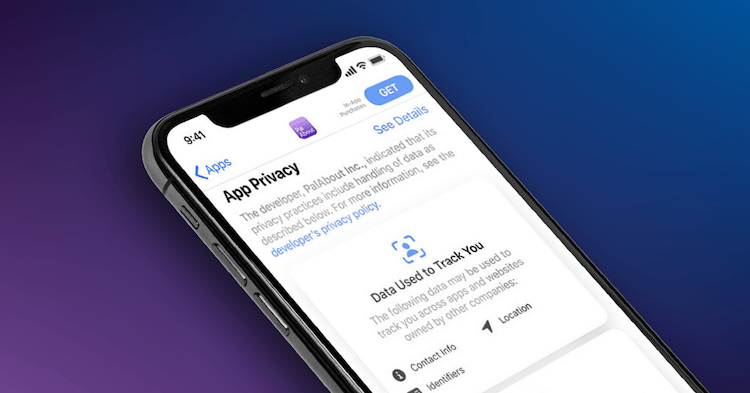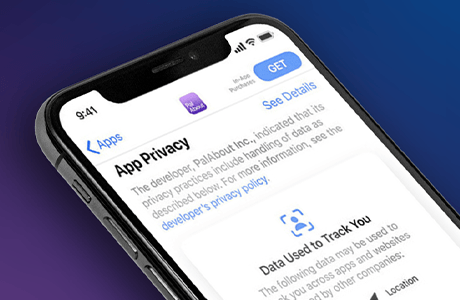The industry, including us, have talked ad nauseam about the disappearance of the IDFA in iOS 14. But there’s something that remarkably fewer people are talking about, and it’s a piece of the overall puzzle that all app publishers must be aware of. It’s what Apple is calling the “nutrition label.”
On each app’s App Store page, developers must clearly explain the data types that their app may collect and whether that data is linked to the user in a way that would be considered tracking (by Apple’s definition). Sounds relatively simple, right? It would be if you were the only entity involved.
But the nutrition label must include the collection practices of third-party partners whose code you integrate into your app. This is a bit like having a high school party where you invite your closest friends, the ones who are responsible and won’t trash your house, but soon the party numbers swell and things get out of control.
Like many teenagers learned the hard way, when you invite people into your house you are ultimately responsible for cleaning up after them. Now, you can ask them nicely to not trash your house, or if they do, to help you clean it up.
That is essentially the position that app publishers are in today. Apple has made it clear in its written announcement and FAQs that there are no excuses: developers are responsible for all the tracking activity that goes on inside their app.
So, the first step that all publishers must take – and should have already taken – is to have that conversation with their monetization partners. It should go a little something like this:
“Hey, can you tell me what kind of data you’re tracking from my app?”
This is their opportunity to answer the question directly, hopefully with written documentation that they have prepared for you and their other publisher partners. It seems like a lot of parties in the industry right now are trying to figure out ways to follow the “spirit” – if not the “letter” – of Apple’s new rules, but every time they do that, it could provide some risk to you as a publisher. Apple in this case is the judge, jury, and executioner – they determine what is or isn’t against their guidelines.
What do I mean by risk? The exact outcomes are hard to say because Apple hasn’t yet begun (publicly) enforcing some of their new rules, but being rejected during the review process seems a likely candidate for minor infractions, whereas getting your app pulled from the App Store is a possibility for more serious issues. Yes, you can always resubmit, but during that period you will be losing potential revenue from new downloads and users.
“And, based on the tracking you do, how should I fill out this privacy nutrition label?”
Privacy policies are notoriously lengthy, written by lawyers who have constructed them to fulfill certain legal requirements. They are, by necessity, quite long and generally small print.
Studies have unsurprisingly shown that 90% of American consumers (and 97% of those ages 18-24) don’t read them. And more than half of internet users believe that privacy policies ensure the confidentiality of their personal information when in most contexts a privacy policy discloses how their customer data is managed and used.
Maximize App Growth with #1 App Store Optimization Company
Expand app store reach, increase downloads, boost engagement, lower acquisition costs & achieve higher user LTV with our leading ASO services & technology
Contact Us TodayWith iOS 14, it’s not as if Apple making companies provide a ton of information that wasn’t already available – rather, Apple is attempting to use a form fill and a consistent, simple layout for all apps, to make it more clear and digestible to the consumer. (To see an example of how ad companies can help their publishers fill it out, go here.)
But when they announced at WWDC that each app would have this easy-to-understand data tracking fact sheet, and compared it to a nutrition label, it raised a lot of questions. First, how will they ensure that the self-reported data is accurate? If it misrepresents or omits key tracking practices, who could be held accountable in the eyes of Apple? (Likely, it’s you, the publisher.)
“Lastly, how does this restriction impact your ability to monetize for me?”
As we face the hard truth that addressable, behaviorally-targeted advertising – like the kind you get now from the Facebook Audience Network – may no longer be a viable option at scale in the not too distant future. It’s time to shift perspectives and invest in capabilities that are guaranteed to be fruitful. Good ad network partners should already be thinking about monetization solutions that are strategically positioned to work in a contextual advertising environment.
Who are the ad networks that can provide advertisers with the most valuable contextual demand? Who are already training their algorithms to focus on contextual signals like the app the user is in, their general location, the time of day the session takes place? Get those as partners for your app.
Next, be sure to establish yourself as a valuable inventory source as advertisers scramble to find supply sources that function well in a non-IDFA landscape. Advertisers and bidders are testing into new supply sources that perform well contextually. If you establish yourself as a good source of profitable contextual inventory, it certainly can’t hurt when Apple flips the iOS 14 IDFA opt-in switch next year.
The question you need to ask yourself: How can I predict the long-term impact?
Yes, Apple has delayed the rollout of some of these privacy features until sometime in 2021. But you can start preparing for this today by monitoring the monetization of users who have already opted out via Limit Ad Tracking (LAT) and find ways to anticipate what your revenue is going to look like when those rates go up dramatically. Forecasting for 2021 will help you plan for whatever is to come.
At the risk of sounding flippant, this is not the end of the world! Game publishers are known for being highly agile and adaptable to new trends in user experience, and you’ve made huge shifts before in response to Apple’s and other regulations. You’re scrappy and resourceful; that’s why you’ve succeeded so far.
This change is an opportunity to be part of the movement toward increased transparency with your users, which in turn builds a better relationship with them. This applies in a very real and tactical sense – brands with better relationships will see better IDFA opt-in rates.
Privacy isn’t going anywhere. The publishers which invest in solutions that meet their consumers’ wants and needs are the ones who are going to see long-term growth.













